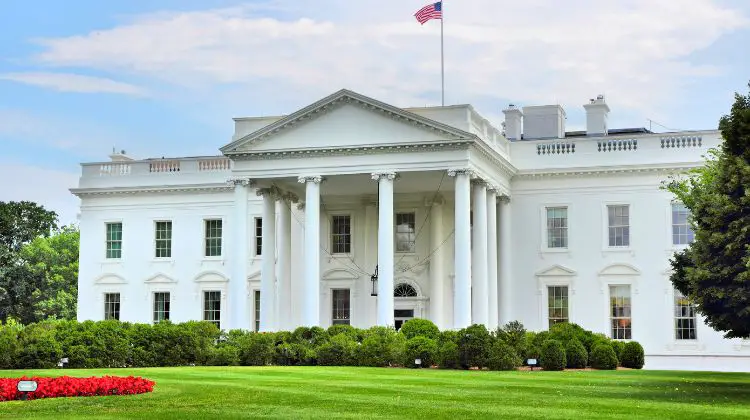
Figuring out money matters can be tough, especially when big new laws come into play. Many people wonder how Trump’s Big Beautiful Bill Act impacts low income households across the country. This isn’t just a passing thought for families trying to make ends meet. Understanding these changes is very important because they can directly affect your budget. We are going to look into what these policies, often called Trump’s Big Beautiful Bill Act, mean for Americans with lower earnings.
Table of Contents:
- Understanding “Trump’s Big Beautiful Bill Act”
- The Tax Cuts and Jobs Act: A Closer Look for Low-Income Families
- Analyzing How Trump’s Big Beautiful Bill Act Impacts Low Income: The Economic Fallout
- Broader Consequences and Social Programs
- Diverse Perspectives and Criticisms
- Lived Experiences: Stories from the Ground
- Conclusion
Understanding “Trump’s Big Beautiful Bill Act”
You might have heard President Trump use the phrase “big beautiful bill.” It sounds grand, but it’s not the official name of one single law. Instead, it usually points to significant legislation he signed, most often the Tax Cuts and Jobs Act of 2017 (TCJA). This law made some major changes to how taxes work for businesses and individuals, forming a key part of trump’s agenda. This discussion helps explain what people mean by Trump’s Big Beautiful Bill Act impacts low income individuals.
The passage of such a sweeping package was a significant event on Capitol Hill, reflecting core tenets of Trump’s campaign promises for economic revitalization. The White House at the time heavily promoted the bill, framing it as essential for American prosperity. Debates around the legislation were often heated, with House Republicans championing the cuts and House Democrats raising concerns about distributional effects and the national debt.
What Policies Are We Talking About?
The TCJA is the main policy generally linked to this phrase. It lowered the corporate tax rate from 35% to 21%, a move aimed at making the U.S. more competitive globally. It also changed individual income tax brackets and rates temporarily, affecting nearly every taxpayer. These changes were quite broad, touching many parts of the economy and altering the existing tax code significantly. The stated goal was to simplify taxes for some and spark economic growth.
While the TCJA is the most common reference, the phrase might sometimes broadly refer to President Trump’s administration’s overall economic approach. This included deregulation efforts and trade policy shifts. But the tax law had the most direct, calculable impact on household finances and the overall domestic agenda.
The Stated Goals vs. The Public Concern
Supporters said these policies would boost the U.S. economy. They predicted businesses, often referred to as job creators, would invest more and create jobs, especially if relieved from what they considered high taxes. They also claimed that families would see more money in their paychecks. The hope was for widespread prosperity, forming a cornerstone of Trump’s domestic agenda.
But, many people worried from the start. Concerns grew about how these changes might affect people with less money. Would the benefits really reach everyone, or mostly help the wealthy? These questions are still debated today when we talk about financial relief and the long-term consequences of this trillion tax cut legislation.
The Tax Cuts and Jobs Act: A Closer Look for Low-Income Families
The TCJA brought several specific changes that directly touched the finances of low-income families. Some parts seemed helpful at first glance. Other parts raised questions about long-term effects. Let’s examine some key features of these Trump tax cuts.
Changes to Individual Income Taxes
One big change was nearly doubling the standard deduction. This is the amount of income you don’t have to pay taxes on if you don’t itemize deductions, simplifying tax filing for many. For many low-income filers, this meant a simpler tax return and potentially less taxable income. For example, the standard deduction for single filers went from $6,350 in 2017 to $12,000 in 2018; for married couples filing jointly, it went from $12,700 to $24,000. This was presented as a way to give people immediate tax credit and relief.
The Child Tax Credit (CTC) also got a boost. The TCJA increased the child tax credit from $1,000 to $2,000 per qualifying child. Importantly, it made more of the credit refundable, up to $1,400. This meant that even families who owed very little in income tax could get some of this money back as a refund, providing direct assistance. The Urban Institute published analyses showing this change did help many families, particularly those with children.
However, the law also eliminated personal and dependent exemptions. These exemptions used to reduce taxable income by a set amount for each person in the household, a significant tax deduction for many. For larger families, losing these exemptions could offset some gains from the higher standard deduction or CTC. It was a bit of a give and take, making the net benefit vary from household to household.
The tax brackets themselves were adjusted, and rates were generally lowered across the board. For those in the lowest income brackets, the changes were often modest. But any shift can be significant when margins are thin.
Here’s a quick comparison of some key provisions before and after the TCJA for individuals:
| Provision | Pre-TCJA (2017) | TCJA (2018-2025) |
|---|---|---|
| Standard Deduction (Single) | $6,350 | $12,000 |
| Standard Deduction (Married Filing Jointly) | $12,700 | $24,000 |
| Personal & Dependent Exemptions | $4,050 per person | Eliminated |
| Child Tax Credit (per child) | Up to $1,000 (limited refundability) | Up to $2,000 (up to $1,400 refundable) |
| Top Individual Income Tax Rate | 39.6% | 37% |
| State and Local Tax (SALT) Deduction | Largely unlimited | Capped at $10,000 per household |
The Temporary Nature of Individual Cuts
A very important detail is that most of the individual income tax changes are temporary. They are set to expire after 2025. Unless Congress acts to make them permanent, tax rules will revert to pre-2017 law, potentially resulting in a tax increase for many. This creates a lot of uncertainty for financial planning.
Low-income families, in particular, benefit from predictable tax policies. Knowing that provisions like the expanded child tax credit might disappear adds stress. It makes it harder to plan for future expenses or savings. This “tax cliff” is a major point of discussion among economists and policymakers on Capitol Hill.
Impact on Affordable Care Act (ACA)
The TCJA also had an impact on healthcare, though indirectly for some. It repealed the individual mandate penalty of the Affordable Care Act. This was the penalty people paid if they didn’t have health insurance. Supporters said this gave people more freedom regarding their healthcare choices.
But, health economists worried about its effects. The Congressional Budget Office (CBO), also known as the congressional budget authority or simply budget office, projected that without the mandate, fewer healthy people would buy insurance. This could lead to higher premiums in the ACA marketplaces. Higher premiums can make coverage less affordable for low and middle-income individuals who don’t get insurance through an employer. This remains a debated outcome of the Trump tax legislation.
Analyzing How Trump’s Big Beautiful Bill Act Impacts Low Income: The Economic Fallout
The promises around what this “Big Beautiful Bill Act” (the TCJA) would do were big. Boosted wages and more jobs were key selling points from the White House. But did these benefits really reach low-income workers in a significant way? The data and interpretations vary widely.
Did it Stimulate Wage Growth for the Bottom Tier?
One major claim was that corporate tax cuts would lead to higher wages for workers. The idea is that companies, with more profits, would invest and share the gains. Some analyses did show nominal wage growth during this period. However, many economists argue about how much was due to the tax cuts versus other economic factors like a tightening labor market.
The Economic Policy Institute (EPI) often points out that real wage growth (wages adjusted for inflation) for low-wage workers was sluggish for decades. They argue that the TCJA didn’t fundamentally change this trend. Other research, like some from the Council of Economic Advisers under President Trump, presented a more positive picture. It’s clear that the impact on wages is complex and not universally agreed upon.
Inflation can eat away at wage gains. If prices for essential goods like housing, food, and healthcare rise, a small pay increase might not feel like much of an improvement. For low-income families, these everyday costs make up a larger portion of their budget, and policies affecting inflation, like the subsequent inflation reduction efforts by other administrations, highlight ongoing economic pressures.
Job Creation: For Whom and Where?
The economy did continue to add jobs after the TCJA house passed and became law. Supporters of the law pointed to this as evidence of its success. The unemployment rate, including for minority groups, reached historic lows before the COVID-19 pandemic. But attributing this solely to the tax cuts is difficult, as the economy had been adding jobs steadily for several years prior to 2017.
Questions also arose about the types of jobs being created. Were they high-quality jobs with good pay and benefits? Or were they mostly in low-wage sectors? These nuances matter when assessing the true benefit to low-income workers, and whether the benefits reached those needing work authorization and stable employment.
The Corporate Tax Cut: Trickle-Down or Siphoned Up?
The sharp cut in the corporate tax rate was the centerpiece of the TCJA. The theory behind it is often called “trickle-down economics,” where job creators save money on high taxes, invest more, hire more, and pay more. Businesses save money on taxes, invest more, hire more, and pay more. But critics argue this doesn’t always happen. They suggest businesses might use tax savings for stock buybacks or dividend payments, benefiting shareholders more than workers.
Several studies tried to track what corporations did with their tax savings. The results were mixed and heavily debated. Some evidence suggested a rise in stock buybacks. The impact on capital investment was less clear than proponents had hoped. This part of the debate about how the law impacts low income families is still very active.
Inflation and Cost of Living
Economic policies can influence inflation. If a tax cut leads to a surge in demand without a corresponding increase in supply, prices can rise. While the TCJA’s direct impact on inflation is hard to isolate from global factors, it’s a concern. Any increase in the cost of living disproportionately hurts low-income households, affecting their ability to afford essentials, including car loans and other debt payments. They have less flexibility in their budgets to absorb higher prices for necessities.
Broader Consequences and Social Programs
Beyond direct tax changes and immediate economic effects, large-scale policies like the TCJA have wider ripple effects. These can touch the national debt and the future of social programs many low-income Americans rely on. It’s important to look at these broader pictures too, especially regarding the safety net.
The National Debt and Future Spending
Major tax cuts, without corresponding spending cuts, usually increase the national debt. The Congressional Budget Office projected that the TCJA would add significantly to the debt over ten years. A larger national debt can lead to pressure for future spending reductions from federal funds. This often puts social safety net programs in the spotlight.
Programs like Medicaid, SNAP (food stamps, officially the Supplemental Nutrition Assistance Program or nutrition assistance program), and housing assistance are vital for many low-income individuals and families. If lawmakers look to cut spending to manage debt, these programs could face reductions, or introduce stricter work requirements. Concerns periodically arise about efforts to cut medicaid or restructure social security. The Peter G. Peterson Foundation often highlights these fiscal challenges. The legislative process for the TCJA itself, using a mechanism called reconciliation, allowed it to pass the Senate with a simple majority, avoiding filibusters but also limiting the scope of what could be included.
Impact on Specific Low-Income Groups
Different low-income groups might have experienced the TCJA’s effects differently. For example, the increase in the Child Tax Credit particularly benefited families with children, offering significant supplemental nutrition assistance for some households. But, the temporary nature of this expansion means those benefits might not be permanent. Seniors on fixed incomes might not have seen much direct benefit from changes aimed at wage earners, and any cuts to social security would affect them profoundly.
People with disabilities or those relying on a specific assistance program might also be indirectly affected by broader fiscal pressures. Understanding these varied impacts is important. Policy changes are rarely one-size-fits-all, and a specific work requirement can be a barrier for some. The effect on access to the supplemental nutrition assistance program for various groups remains a key concern.
State and Local Government Finances
Federal tax policy can also influence state and local government finances. Some states link their tax codes to the federal code. Changes at the federal level can lead to unexpected changes in state revenues. If state revenues fall, it could affect funding for local services, impacting local tax burdens. These services often include education, public health, and infrastructure, which are critical for all communities, especially low-income ones.
The TCJA’s cap on the state and local tax (SALT deduction), for instance, primarily affected taxpayers in high-tax states. While not directly a low-income issue for most, it did shift some tax burdens and influenced debates about the local tax deduction. This could indirectly pressure state budgets over time.
Diverse Perspectives and Criticisms
It’s no surprise that opinions on the TCJA and its impact on low-income Americans are sharply divided. Think tanks, advocacy groups, and economists offer a wide range of views. Listening to these different voices, often amplified through social media and traditional news outlets, helps build a fuller understanding.
Voices from Think Tanks and Advocacy Groups
Conservative-leaning think tanks, such as The Heritage Foundation or the American Enterprise Institute, generally argue that the TCJA was beneficial. They highlight economic growth, job creation, and the initial tax relief provided to many families. They often advocate for making the individual tax cuts permanent. They believe lower taxes stimulate business investment that ultimately helps everyone, fulfilling a key part of Trump’s domestic agenda.
On the other side, progressive organizations like the Center on Budget and Policy Priorities (CBPP) and the Institute on Taxation and Economic Policy (ITEP) are often critical. They argue the TCJA disproportionately benefited corporations and wealthy individuals. They point to its impact on the national debt. They also express concern that it did little to address income inequality or help low-income families in a lasting way, despite being a central piece of trump’s agenda. Their analyses, sometimes originally published in academic journals or detailed reports, frequently focus on the long-term distribution of tax benefits.
These organizations publish detailed reports and analyses. Reading them can give you a deeper insight into the data and the arguments. They often use different economic models and assumptions, leading to different conclusions about President Trump’s signature legislative achievement. The role of house leadership in shepherding the bill, the debates during house passage, and the details of the final vote are also subjects of ongoing political analysis.
Lived Experiences: Stories from the Ground
Beyond complex economic models, personal stories can show the real-world impact. News reports and community organizations sometimes share how families are managing. Some might have felt a small boost from a slightly larger tax refund. Others might not have noticed much difference, especially if rising costs offset any tax gains.
These lived experiences highlight that broad economic data doesn’t always capture individual realities. For one family, a few hundred extra dollars might be a big help. For another, the looming expiration of tax provisions might cause more worry than relief. These human stories are an important part of the overall picture, reflecting the ground-level effects of decisions made on Capitol Hill and by figures like the House Speaker of the time, influencing Trump’s campaign narratives and the legacy of President Joe Biden’s contrasting policies.
Conclusion
The question of how Trump’s Big Beautiful Bill Act impacts low income individuals doesn’t have a simple answer. The most commonly referenced policy, the Tax Cuts and Jobs Act of 2017, brought a mix of changes. Some, like the increased standard deduction and Child Tax Credit, aimed to give immediate tax relief to families. However, the temporary nature of these individual provisions creates future uncertainty, potentially leading to a tax increase if not extended by figures such as the current House Speaker Mike Johnson or future congresses.
Concerns also persist about whether the corporate tax cuts truly translated into substantial, lasting benefits for lower earners, or if they largely favored the wealthy and increased the national debt. The Congressional Budget Office continues to monitor the fiscal impacts. As we continue to see economic shifts and debate future tax policy, understanding the varied ways the TCJA—a central piece of Trump’s domestic agenda and often termed his ‘big beautiful bill’—impacts low income communities remains very important. The debates surrounding work requirements for assistance programs like food stamps (the supplemental nutrition assistance program) and funding for social security are also linked to the broader fiscal landscape shaped by these Trump tax cuts.




Leave a Reply